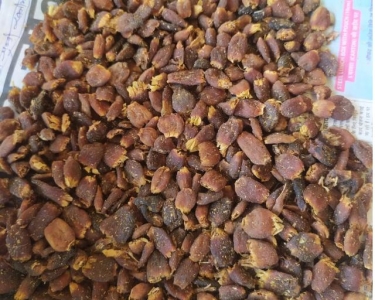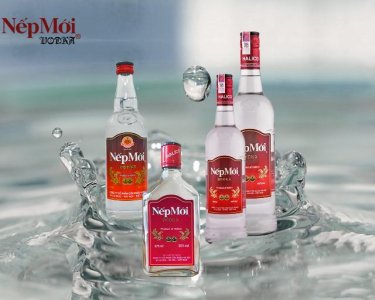Live animals
Couldn't find the product you want?
Fill out this form to request the product.
Products You May Like
Import to Marshall Islands
The Republic of the Marshall Islands is about midway between Hawaii and Australia. Located in the northern Pacific, the Marshall Islands consist of 24 low-lying coral atolls comprising 1,156 individual islands and islets. The Republic of the Marshall Islands covers nearly a million square miles of picturesque islands, thriving coral atolls, and crystal clear blue waters. The general landscape is sandy as most of these islands rise only a few feet above sea level, with the highest point being an unnamed hill on Likiep which peaks at only 10 m.
Majuro (the capital and largest city of the Republic of the Marshall Islands) retail stores offer a surprising variety of consumer goods despite the country's remote location. The two largest grocery stores in Majuro stock a large variety of American grocery products, including packaged and canned goods, frozen meats, vegetables, ice cream, bread, and a good supply of dairy products. Other major imports of the Marshall Islands include cruise ships, drilling platforms, mineral products.
Meanwhile, the major imports trade partners of the Marshall Islands are the following countries: Korea, Rep., China, Germany, Turkey, Poland, Nigeria.
Top 5 Products imported by The Marshall Islands are:
- Passenger and Cargo Ships
- Refined Petroleum
- Iron Structures
- Recreational Boats
- Boat Propellers
Export from Marshall Islands
The Marshall Islands, officially the Republic of the Marshall Islands is an island country located near the equator in the Pacific Ocean, slightly west of the International Date Line. Geographically, the country is part of the larger island group of Micronesia. The country's population of 68,480 people is spread out over 24 coral atolls, comprising 1,156 individual islands and islets.
Agricultural production on The Marshall Islands is concentrated on small farms with the most important commercial crops being coconuts, tomatoes, melons, and breadfruit. The subsistence economy consists of fishing and breadfruit, banana, taro, and pandanus cultivation.
On the outer islands, production of copra and handicrafts income provide cash income: thus, the modern private sector consists of wholesale and retail trade, restaurants, banking and insurance, construction and repair services, professional services, and a small amount of copra processing. Despite its small size, however, copra cake and copra oil are by far the largest exports of The Marshall Islands. Nowadays the Marshall Islands have 22,000 acres of coconut plantations, and copra production has been the most important single commercial economic activity for the past hundred years. Unfortunately, the world market for coconut oil is currently in decline and diminishes the value of the Marshall Islands' largest export commodity.
Major exports of Marshall Islands are:
1. Transportation: Floating or submersible drilling platforms (38%)
2. Transportation: Cruise ships and similar vessels for the transport of persons (35%)
3. Animal & Animal Products: Frozen fish, excluding fillets (19%)
4. Mineral Products: Petroleum oils, refined (2%)
5. Transportation: Vessels and other floating structures for scrapping (1%)
Major export trade partners of Marshall Islands are South Africa, Korea, Rep., Poland, China, Thailand, Greece.
Check Out Export Portal: A Site That Lets You Export Live Animals
If you are looking to buy and export animals, then you came to the right place! Export Portal's Live Animals Department is an online marketplace for sellers and buyers of any livestock. We work to contribute to the live export industry, which brings many economic advantages and other benefits to countries that rely heavily on livestock imports. In fact, in just Australia alone, this industry contributes roughly $1.8 billion to the country's GDP each year. Moreover, it also ensures food security while helping people meet their protein needs as well.
Finding the Right Animal
We feature a wide range of pigs, cows, sheep, goats, horses, rabbits and hares, turkeys, bees, and fish for sale. An increasing number of American, Australian, German, South African, Argentinian, and Italian farmers and companies are advertising their livestock with Export Portal, portraying just how effective and helpful our site is.
To help customers make more informed purchasing decisions, our site lets users narrow down their searches by the age, breed, and sex of the animal. If you are feeling hesitant to shop on our site and want more detailed information, make sure to check out our seller ratings and reviews, which are written by our buyers and customers. We also collaborate with hundreds of trusted international shipping companies that arrange the transport of all kinds of animals and birds to any country in the world.
Online Shopping is More Simple with Export Portal
Export Portal is an ideal site for everyone who is an avid online shopper. Our convenient options make it easy to find and buy whatever you are looking for. Our seller network from all over the world has everything you need, and our customer support team will make sure you can find it. Our wide assortment of products will be sure to provide you with the best shopping experience. Make sure to check out our site and items today!
Customs requirements of Marshall Islands
Marshall Islands Customs Contacts:
Email: rmi.consulate@hawaiiantel.net
Address: Honolulu, HW 1888 Lusitana Street, Suite 301, 96813, Honolulu, Hawaii, United States
Phone: +1-808-545-7767
Fax: +1-808-545-7211
The Marshall Islands consist of 29 atolls and 5 individual islands totaling about 1,225 islands and 870 reef systems scattered over 750,000 square miles of the Central Pacific. Marshall Islands share maritime borders with Kiribati, the Federated States of Micronesia, Nauru, and Wake Island.
Heavy and increasing trade deficits on Marshall Islands result from limited exports and dependency on imports for consumer and capital goods. Over 90% of the value of exports is accounted for by fish, coconut oil, and copra cake (made of dried coconut meat). The US, Japan, and Australia are the main export partners, while the US is the primary import source, followed by Japan and the Philippines. The major imports are foodstuffs, machinery and equipment, fuels, beverages, and tobacco.
The Marshall Islands is open to foreign trade. The country’s trade policy is conducted by the COFA agreement under which the country has duty-free access to the U.S. market. Custom duties are not very high, and the country has very few trade barriers. However, the Marshall Islands only has very few natural resources and consequently a very limited base for exports. The country also lacks adequate infrastructures and airline transportation.
The country imports in high volumes, while its exports are very weak, resulting in an enormous trade deficit, which should continue to increase in the coming years. As it stands, the country might be forced to impose quotas for fishing certain species in 2015 in order to preserve its stock, an action that would further decrease its exports. On the positive side, the production of copra, one of its major exports, has been reaching very satisfactory levels since 2013. Fishing licences are the country's main source of revenue. In 2015, as in the past, the main trade partner of the Marshall Islands remains the United States.
Certain commodities are considered as “Non-Document” and need to be accompanied by an invoice and, in some cases, additional customs documentation. Other commodities are considered simply as a “Document” and only require a DHL Waybill to be completed.
Sources:
http://www.nationsencyclopedia.com/Asia-and-Oceania/Marshall-Islands-FOREIGN-TRADE.html
https://marshall-islands.visahq.com/customs/#!import-regulations
http://www.dhl.com/en/mh/country_profile/import_guidelines_express.html
http://www.nationsonline.org/oneworld/marshall_islands.htm
http://www.suddefrance-developpement.com/en/country-profiles/marshall-islands/exchange-3.html





